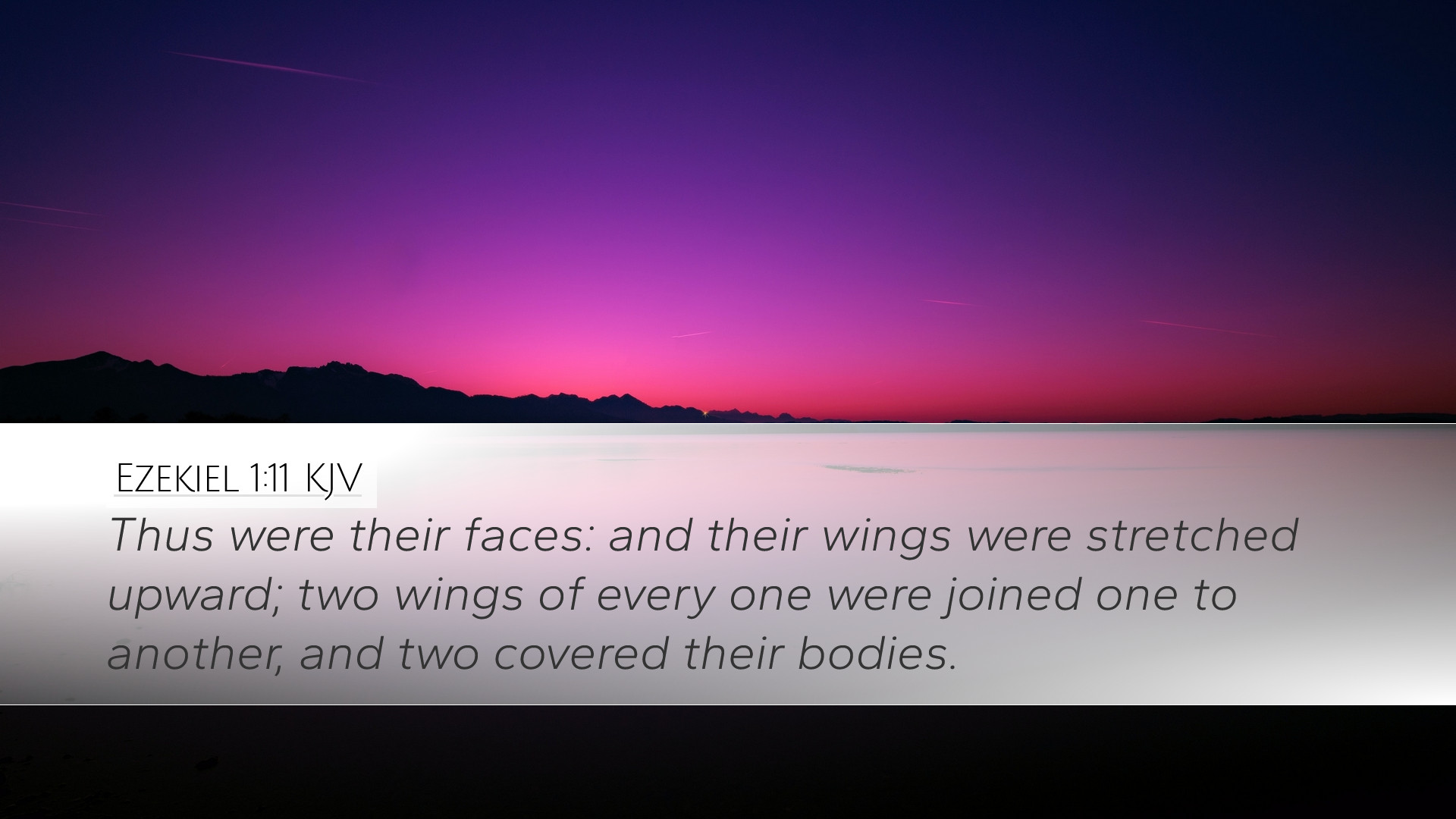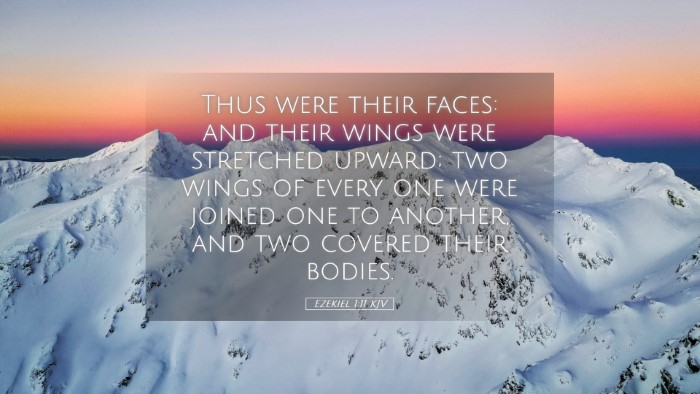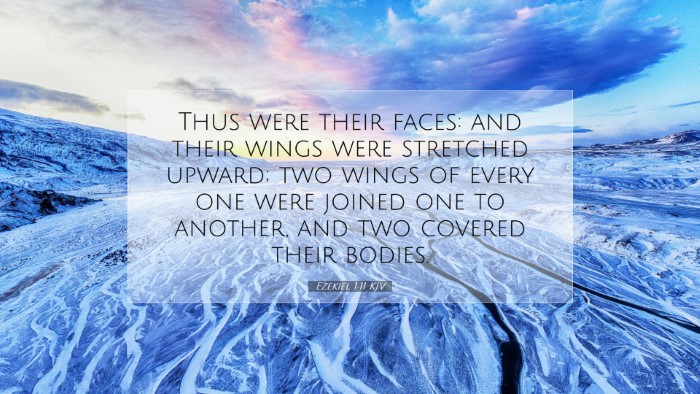Ezekiel 1:11 Commentary
Bible Verse: "Thus were their faces: and their faces were the faces of a man, and the face of a lion, on the right side: and they four had the face of an ox on the left side; they four also had the face of an eagle." (Ezekiel 1:11)
Contextual Overview
The book of Ezekiel is a significant prophetic text that often employs vivid imagery and symbolism. Ezekiel, a priest and prophet, writes during the Babylonian exile, providing insights into the nature of God, the consequences of sin, and the promise of restoration. The vision in Ezekiel 1 provides a profound introduction to God's divine sovereignty and the complexity of his creation.
Symbolism in the Faces
The four faces described in Ezekiel 1:11—those of a man, a lion, an ox, and an eagle—symbolize various attributes of God and aspects of His creation. Each face represents a different facet of God's character and His relationship with humanity.
- Face of a Man: This face symbolizes intelligence and moral agency, reflecting God's desire for a relationship with humanity.
- Face of a Lion: Representing strength and majesty, the lion is a symbol of God's power and authority over all creation.
- Face of an Ox: The ox signifies servitude and strength, illustrating the steadfastness and enduring support of God.
- Face of an Eagle: The eagle represents swiftness and vision, symbolizing God's omnipotent oversight and protection.
Insights from Commentaries
This analysis draws from renowned public domain commentators to explore the meaning behind this rich imagery.
Matthew Henry's Commentary
Matthew Henry highlights the significance of the four living creatures, emphasizing how their combined characteristics reveal the glory of the Creator. Henry argues that the diversity of these faces represents various ways that God interacts with the world. For instance, the face of a man reminds believers of God's personal involvement in human affairs, while the lion's face suggests His fierce protection against enemies.
Albert Barnes' Notes on the Bible
Albert Barnes elaborates on the four creatures as manifestations of divine glory and power. He emphasizes that each creature's face serves as a reminder of God’s multifaceted nature:
- The face of a man points to God's rational and intelligent governance.
- The face of a lion depicts God's sovereignty and strength, akin to His role as the ultimate judge.
- The face of an ox underscores the idea of labor and diligence in service to God.
- The eagle's face confirms God's providence, soaring above worldly affairs with a watchful eye.
Adam Clarke's Commentary
Adam Clarke provides a detailed analysis of the symbolic meanings behind the four faces. He posits that these images reflect the attributes of the four Gospel writers, where:
- Matthew's Gospel is often associated with the man, as it focuses on the humanity of Christ.
- Mark is represented by the lion, emphasizing Christ's royal dignity.
- Luke correlates with the ox, showcasing Christ's sacrificial service.
- John is likened to the eagle, reflecting the divine and transcendental aspects of Christ's nature.
The Theological Implications
Understanding these symbols is vital for theologians and pastors. They capture the essence of God's interaction with humanity—both majestic and intimate. This complexity invites believers to explore a multi-dimensional relationship with God, acknowledging His justice alongside His mercy.
Application for Ministry
For pastors, the imagery provides a framework for preaching about the character of God. Each face presents a unique aspect of God that can be emphasized in different congregational needs:
- In times of strife, the lion may offer comfort, suggesting God’s protection.
- In moments of doubt about God's plan, the ox encourages perseverance in faith.
- When seeking understanding of moral decisions, reflecting on the face of a man promotes reliance on God’s wisdom.
- In urgent situations, considering the eagle can inspire prayers for God’s swift intervention.
Conclusion
In Ezekiel 1:11, the imagery of the four faces conveys a rich tapestry of God's nature and character. This commentary synthesizes insights from respected theologians to promote deeper understanding among pastors, scholars, and students. Engaging with these symbols not only strengthens faith but also enriches the believer's experience of God's profound and multifaceted love.


